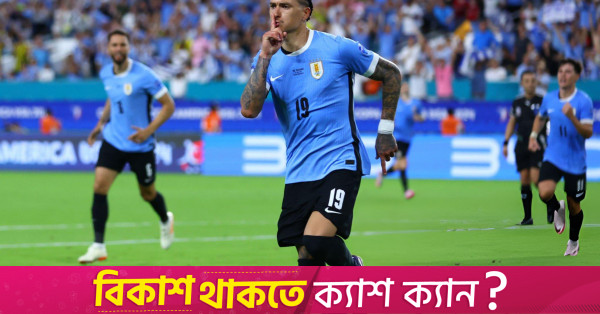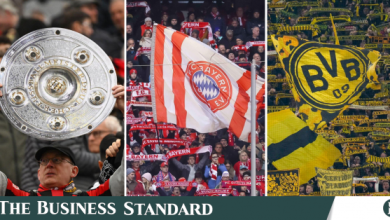Uruguay show they will be intense threat at Copa America

Marcelo Bielsa’s Uruguay offered an instant reminder of why they will likely be among the challengers at the Copa America with an impressive 3-1 victory over Panama on Sunday.
But the team second in South American World Cup qualifying, behind Argentina, also showed there are vulnerabilities in how their coach approaches games.
Although Uruguay only led 1-0 until Darwin Nunez doubled their lead in the 85th minute and Matias Vina headed in a third in stoppage time – before a late consolation for Panama – their first-half display was an exhibition of Bielsa’s high-energy, attacking, philosophy.
If there was any doubt about whether the Florida heat would lead Uruguay to adopt a more cautious, energy-saving approach, that was dismissed from kick-off as “La Celeste” swarmed their opponents with their relentless pressing.
At times it looked as if Panama were outnumbered. Uruguay threw men forward into every attack and offered no respite when their opponents had possession, pressing high and fast in packs.
When Maximiliano Araujo fired them in front in the 16th minute with a wonderfully struck left-foot shot from the edge of the box, the question seemed to be simply how long it would take for the next goal.
But while Uruguay peppered the Panama goal with shots and Liverpool striker Nunez threatened in the air and on the ground, Panama goalkeeper Orlando Mosquera proved up to the test.
Nunez and his team-mates also lacked a clinical touch at times as they failed to take advantage of a defence that looked shell-shocked.
“The first half was a performance where we showed our superiority and we could have scored more goals than we did,” said Bielsa.
Panama head coach Thomas Christiansen said his team had shown “too much respect” to their opponents, but in truth they simply couldn’t cope with the relentless attacks.
Somehow though the Central American side made it to the interval just a goal down and were able to regroup and rethink their game plan.
They returned with a more compact and narrower midfield, which troubled Uruguay.
Heat factor
The intensity of Uruguay’s play came at a price.
They lacked the energy to continue with their aggressive approach and for the opening period of the second half, Panama were on top.
“The second half, there was 15-20 minutes or so where we didn’t play so well. They dominated these phases of play and created some chances, and there was only a goal in it,” said Bielsa.
Bielsa conceded that his tactics had come up against the energy-sapping conditions in Florida and that had impacted his team.
“We saw that with the weather, very high humidity, it is difficult to manage the energy.
“And Uruguay depends a lot on its dynamics. But if, out of 90 minutes, we were able to impose ourselves on the game in the way we wanted for 70 or 75 minutes, then the ratio is good,” he said.
“It could have become complicated for us. After 20 minutes of the second half we were dominating again and creating chances, and the result seemed to represent what happened on the field,” he added.
It did on this occasion.
But for the USA, who face Uruguay in the final game in Group C, and for the big teams who could play Bielsa’s men in the latter stages, there were also some hope.





